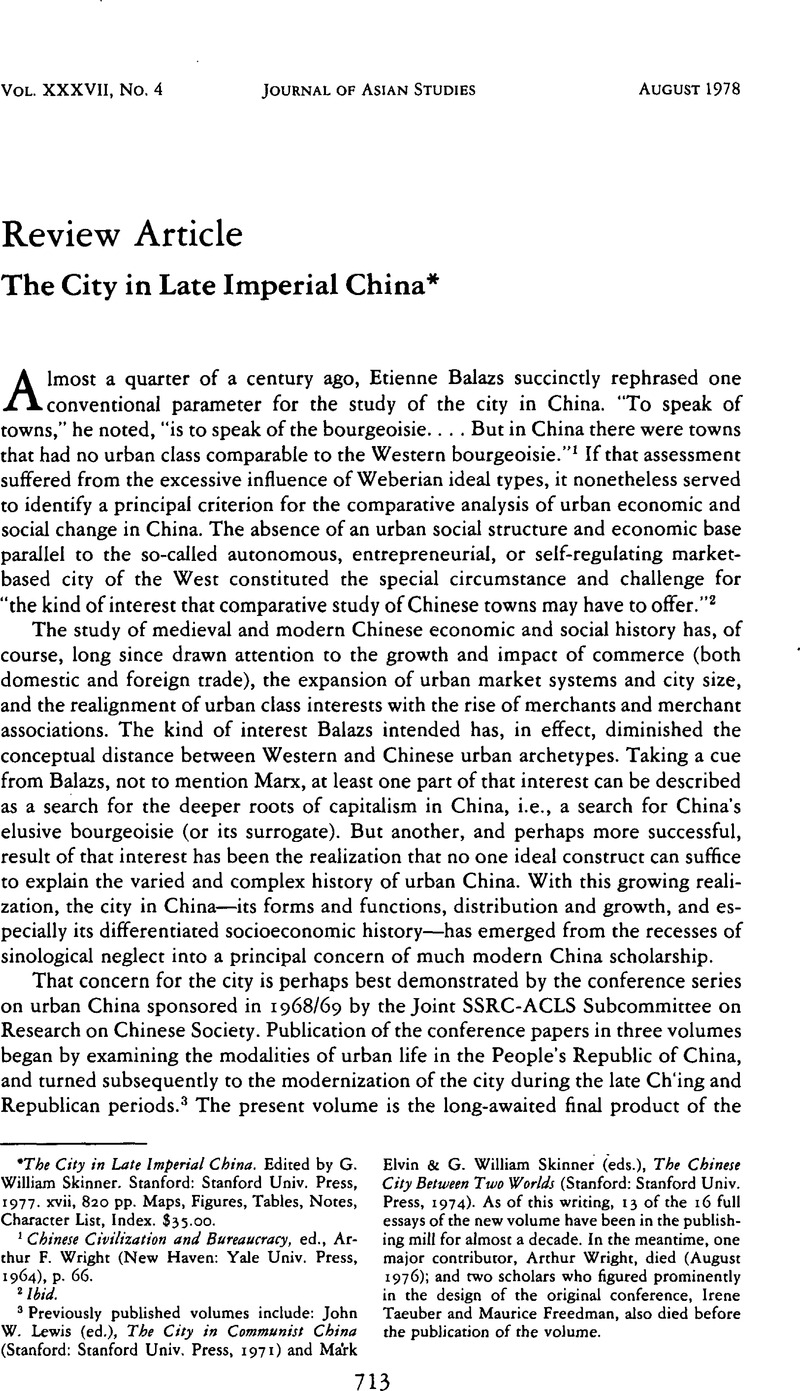Published online by Cambridge University Press: 23 March 2011

1 Chinese Civilization and Bureaucracy, ed., Wright, Arthur F. (New Haven: Yale Univ. Press, 1964), p. 66.Google Scholar
2 Ibid.
3 Previously published volumes include: Lewis, John W. (ed.), The City in Communist China (Stanford: Stanford Univ. Press, 1971)Google Scholar and Elvin, Mark & Skinner, G. William (eds.), The Chinese City Between Two Worlds (Stanford: Stanford Univ. Press, 1974).Google Scholar As of this writing, 13 of the 16 full essays of the new volume have been in the publishing mill for almost a decade. In the meantime, one major contributor, Arthur Wright, died (August 1976); and two scholars who figured prominently in the design of the original conference, Irene Taeuber and Maurice Freedman, also died before the publication of the volume.
4 Chicago: Aldine, 1971.
5 The urban population for the combined three regions in 1843 amounted to 6.9% of their total population, while in 1893 it had grown to 8.9%. Left unstated, however, is the fact that, even as the absolute figure for China as a whole reflected an increased urban sector between 1843 and 1893 of some three million, and similarly witnessed an increase in the percent urban from 5.1% to 6.0%, the relative position of the three most urbanized regions declined from 41% to 39.5% of China's total urban population. That decline was felt most sharply in the Lower Yangtze Basin, and can be attributed to the ravages of the 19th-century rebellions.
6 Urban Networks in Ch'ing China and Tokugawa Japan (Princeton: Princeton Univ. Press, 1973).Google Scholar
07 Critiques of the theory abound; for the most part, they center on the idea that the spatial economy is itself a product of sociopolitical structures, ideology, and value systems. See, for example, Friedmann, J., “The Spatial Organization of Power in the Development of Urban Systems,” Comparative Urban Research, I (1972), pp. 5–42.Google Scholar
8a Song of Myself, stanza 23; 8bPassage to India, stanza 3.
09 For a useful review and critique of the theory as cpplied in non-industrial societies, see Brookfield, Harold, Interdependent Development (London: Methuen &Co., 1975).Google Scholar For a more standard introduction to the issue, see Morrill, R. L., The Spatial Organization of Society (North Scituate, Mass:Duxbury Press, 1974), pp. 25–39.Google Scholar
10 This, in effect, represents a principal neoclassical and Marxist critique of the theory. See, for example, Harvey, David, “Social Justice and the Spatial System,” Antipode (Clark University, Monographs in Social Geography, I, 1 (1972), pp. 87–106.Google Scholar
11 Much contemporary geographical theory has moved on from the quantitative, spatial analytical “revolution” of the 1960s to a more historically conscious, particularistic, and humanist mode of analysis. See, for example, Ley, David & Samuels, M. S. (eds.), Man's Place: Themes in Geographical Humanism (Chicago: Maaroufa Press, 1978).Google Scholar